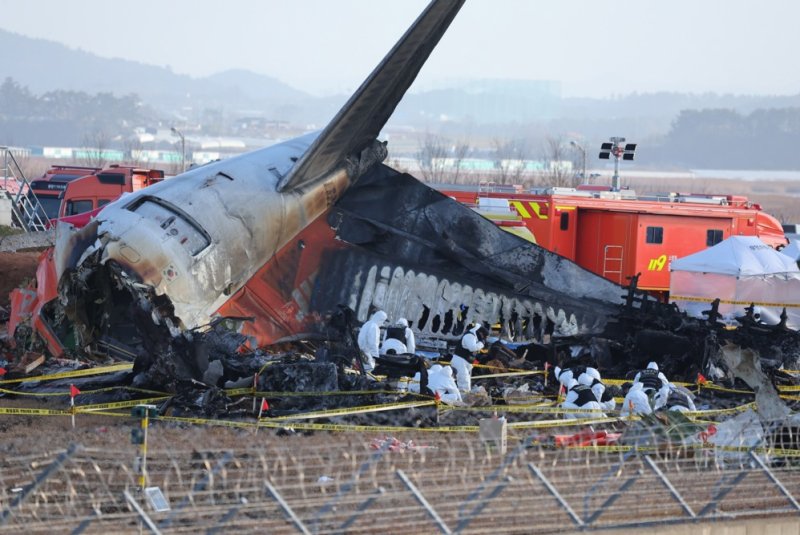Jan. 11 (UPI) — The two flight recorders on board a South Korean airliner stopped working before the jet crashed during an emergency landing and subsequent crash that killed 179 of the 181 people on board, officials said Saturday.
The flight data recorder and cockpit voice recorder, commonly called black boxes, both stopped functioning around four minutes before Jeju Air flight 2216 crashed at Muan International Airport, South Korea’s Ministry of Land, Infrastructure and Transport confirmed Saturday in a statement.
Officials did not speculate on why the devices may have stopped working on the Boeing 737-800 that was arriving from Bangkok, Thailand.
Two people survived the crash on Dec. 29, after the passenger jet made a belly landing at the airport at 9:03 a.m. local time, eventually bursting into flames after running off the end of the runaway.
Both flight recorders were recovered from the crash and shipped to the U.S. National Transportation Safety Board’s facilities in Washington, D.C. for analysis. The cockpit voice recorder was sent Monday accompanied by NTSB investigators. The flight data recorder was damaged and sent later after South Korean officials were unable to repair it.

The flight data recorder and cockpit voice recorder both stopped functioning around four minutes before Jeju Air flight 2216 crashed at Muan International Airpor. File Photo courtesy of Muan Fire Station
“CVR and FDR data are important data for accident investigations, but accident investigations are conducted through investigation and analysis of various data, so we plan to do our best to accurately identify the cause of the accident,” the ministry said in the statement.
Following the crash, Boeing said it stood ready to assist with the air accident investigation.

Officials did not speculate on why the devices may have stopped working on the Boeing 737-800 that was arriving from Bangkok, Thailand. File Photo courtesy of Muan Fire Station
South Korea later ordered an emergency inspection of the country’s aviation system after the worst aviation accident ever on Korean soil. The crash was also the deadliest accident involving a South Korean aircraft since Korean Air flight 801 crashed in Guam in 1997, killing 228 people.
Muan airport, in the southern tip of the country, is scheduled to remain closed until Tuesday because of the accident investigation.
Last week, South Korea’s Minister of Land, Infrastructure and Transport Park Sang-woo said he was considering resigning because of the backlash following the accident.
Officials have been criticized because the plane impacted a large concrete after overshooting the runway, contributing to the disaster.
Flight data recorders and cockpit voice recorders typically capture two hours of data before starting to re-record. They capture important technical parameters about the flight as well as everything that occurs inside the cockpit, including the pilots’ conversations and any warnings that may go off.
In December, the U.S. Federal Aviation Administration proposed increasing that amount of time to 25 hours on all new commercial aircraft.

